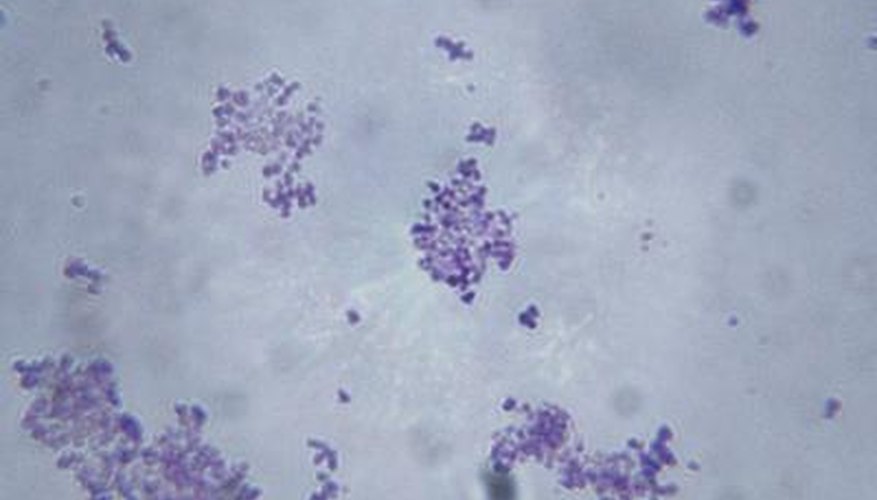Biologists classify living organisms by grouping together those that have similar characteristics. They categorise living things into seven major classifications. The broadest and largest classification is the kingdom. There are six kingdoms: Archaebacteria, Eubacteria, Protista, Fungi, Plantae and Animalia. At one time, Archaebacteria and Eubacteria were considered one kingdom, known as Monera. Many members of the former Monera kingdom play beneficial roles in the natural world. Some, however, negatively affect other living things and the environments in which they live.
Characteristics
Archaebacteria and eubacteria are single-celled organisms that lack a nucleus and other specialised membrane-bound structures, called organelles. They have cell walls that provide a structural framework and regulate the movement of substances in and out of the cell. Some produce their own food while others live off of other living things. They reproduce either sexually through conjugation, or asexually through binary fission. Some produce endospores, a dormant, resistant form that allows them to survive unfavourable conditions.
- Archaebacteria and eubacteria are single-celled organisms that lack a nucleus and other specialised membrane-bound structures, called organelles.
- They have cell walls that provide a structural framework and regulate the movement of substances in and out of the cell.
Global Warming
Archaebacteria are the oldest living organisms. They live in harsh environments such as salt flats; hot, acidic water environments; the ocean depths; and the intestines of animals. Some archaebacteria, called methanogens, produce methane, a potent, environmentally harmful greenhouse gas associated with global warming. The intestines of ruminants, such as cows and sheep, contain methanogens. Consequently, they eliminate methane gas as a by-product of digestion. According to engineers at Global Environment Technology and Management, cows account for approximately 80 per cent of the global annual methane emissions from domestic livestock and 12.8 per cent of the total annual production of methane.
- Archaebacteria are the oldest living organisms.
- Some archaebacteria, called methanogens, produce methane, a potent, environmentally harmful greenhouse gas associated with global warming.
Disease
Eubacteria, or true bacteria, live just about everywhere. Although many of them are not harmful, some do live parasitically within a living host and cause disease. Eubacteria are divided into three major forms: spherical cocci, rod-shaped bacilli and spiral-shaped spirilla. Staphylococcus aureus is an example of a spherical bacterium. It causes skin infections and has become a major concern in the health care community because of its resistance to many antibiotics. Bacillus anthracis is a rod-shaped bacteria used in biological warfare. It forms highly resistant spores and infects individuals through the skin or through inhalation. Treponema pallidum, the bacteria that causes syphilis, is an example of a spiral-shaped bacterium, also known as a spirochaete. According to Neil Saunders, a researcher at the University of New South Wales in Sydney, Australia, it is unknown if any archeabacteria cause disease.
- Eubacteria, or true bacteria, live just about everywhere.
- Treponema pallidum, the bacteria that causes syphilis, is an example of a spiral-shaped bacterium, also known as a spirochaete.
Algae Blooms
Cyanobacteria, also known as blue-green algae, are a type of eubacteria that flourish in freshwater ponds and lakes with poor water flow. When conditions are right the bacteria can multiply rapidly and accumulate, causing a bloom that turns the water blue-green or reddish brown. Foam or scum may be visible on the water's surface. The overgrowth periodically consumes oxygen in the water, suffocating the fish. The water can be toxic if consumed and has been linked to the poisoning of cattle, dogs and occasionally people. It can cause a skin irritation, commonly known as swimmer's itch, as well as respiratory irritation.
- Cyanobacteria, also known as blue-green algae, are a type of eubacteria that flourish in freshwater ponds and lakes with poor water flow.
- When conditions are right the bacteria can multiply rapidly and accumulate, causing a bloom that turns the water blue-green or reddish brown.
